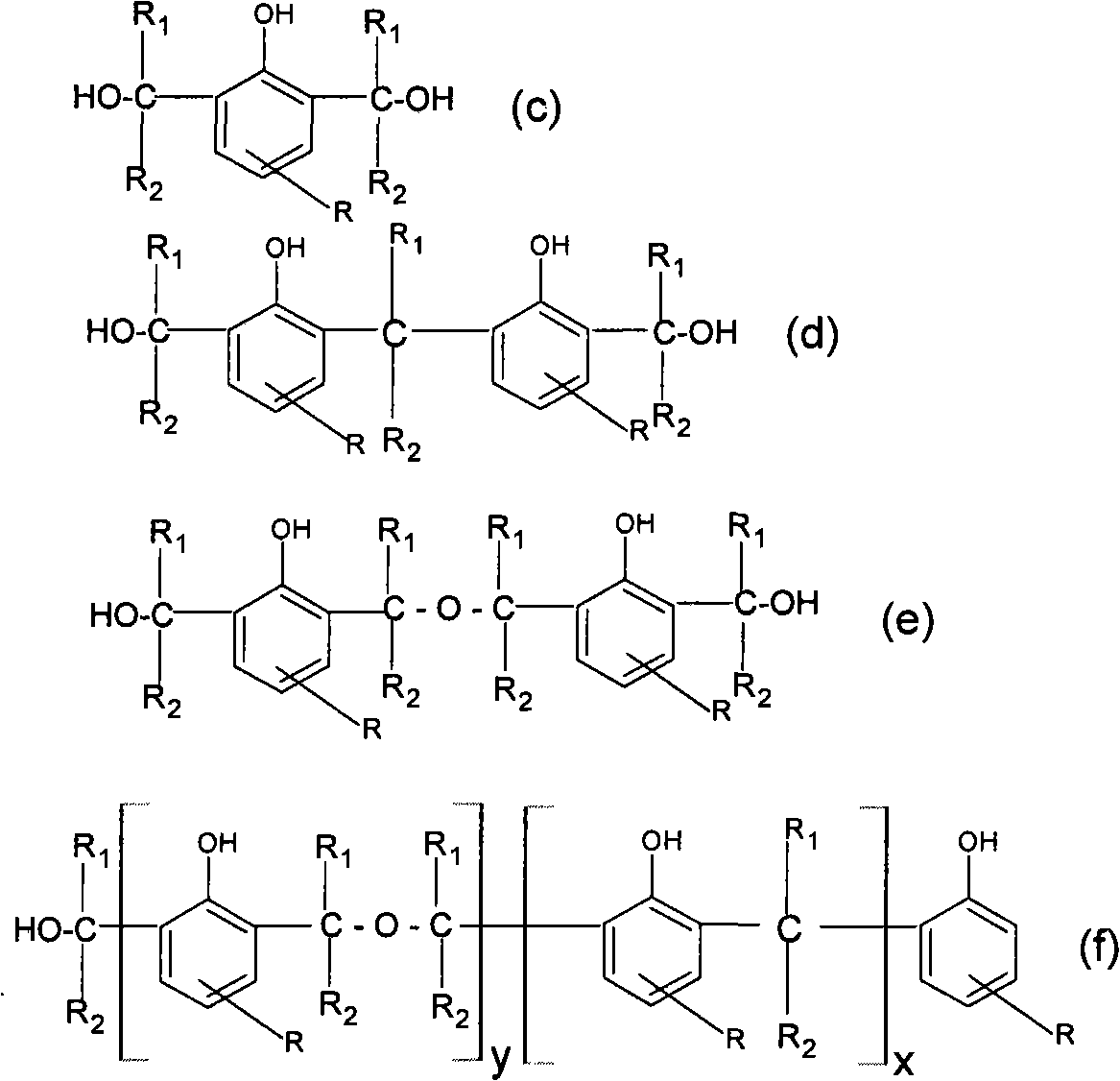Modified phenolic tackifying resins for rubber compounding applications
A tackifying resin, resole phenolic resin technology, used in other rubber adhesives, adhesives, adhesive types, etc., to solve problems such as high cost and availability
- Summary
- Abstract
- Description
- Claims
- Application Information
AI Technical Summary
Problems solved by technology
Method used
Image
Examples
Embodiment 1
[0055] Rosin and morpholine modified p-tert-butylphenol (PTBP)-formaldehyde resin
[0056] 50 kg of p-tert-butylphenol (PTBP) and 25 kg of toluene were added to the reactor and heated to 85 to 110° C. to dissolve the phenol. Triethylamine (TEA) catalyst was then added to adjust the pH of the reaction mixture to basic conditions. Then, under reflux conditions, 32 kg of aqueous formaldehyde (37%) was slowly added over a period of about 2-3 hours. Morpholine (5 kg) and rosin (5 kg) were added to the resole mixture and refluxed for an additional 2-3 hours. Finally, the reaction mixture is first dehydrated at atmospheric pressure, and then the volatile substances present in the resin product are removed under vacuum (temperature 180-200° C. and vacuum 25-50 mm Hg).
Embodiment 2
[0058] Rosin, stearic acid and morpholine modified p-tert-butylphenol (PTBP)-formaldehyde resin
[0059] 150 kg of p-tert-butylphenol (PTBP) and 75 kg of toluene were added to the reactor and heated to 85 to 110° C. to dissolve the phenol. Triethylamine (TEA) catalyst was then added to adjust the pH of the reaction mixture to basic conditions. Then, under reflux conditions, 95 kg of aqueous formaldehyde (37%) was slowly added over a period of about 2-3 hours. Morpholine (14 kg), rosin (15 kg) and stearic acid (6 kg) were added to the resole mixture and refluxed for an additional 2-3 hours. Finally, the reaction mixture is first dehydrated at atmospheric pressure, and then the volatile substances present in the resin product are removed under vacuum (temperature 180-200° C. and vacuum 25-50 mm Hg).
Embodiment 3
[0061] Rosin, stearic acid and morpholine modified p-tert-octylphenol (PTOP)-formaldehyde resin
[0062] 225 grams of p-tert-octylphenol (PTOP) and 150 grams of toluene were added to the reaction flask and heated to 85 to 110° C. to dissolve the phenol. Triethylamine (TEA) catalyst was then added to adjust the pH of the reaction mixture to basic conditions. Then, under reflux conditions, 104 kg of aqueous formaldehyde (37%) was slowly added over a period of about 2-3 hours. Morpholine (15 grams), rosin (16 grams) and stearic acid (6 grams) were added to the resole mixture and refluxed for an additional 2-3 hours. Finally, the reaction mixture is first dehydrated at atmospheric pressure, and then the volatile substances present in the resin product are removed under vacuum (temperature 180-200° C. and vacuum 25-50 mm Hg).
PUM
 Login to View More
Login to View More Abstract
Description
Claims
Application Information
 Login to View More
Login to View More - R&D
- Intellectual Property
- Life Sciences
- Materials
- Tech Scout
- Unparalleled Data Quality
- Higher Quality Content
- 60% Fewer Hallucinations
Browse by: Latest US Patents, China's latest patents, Technical Efficacy Thesaurus, Application Domain, Technology Topic, Popular Technical Reports.
© 2025 PatSnap. All rights reserved.Legal|Privacy policy|Modern Slavery Act Transparency Statement|Sitemap|About US| Contact US: help@patsnap.com



